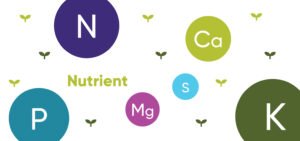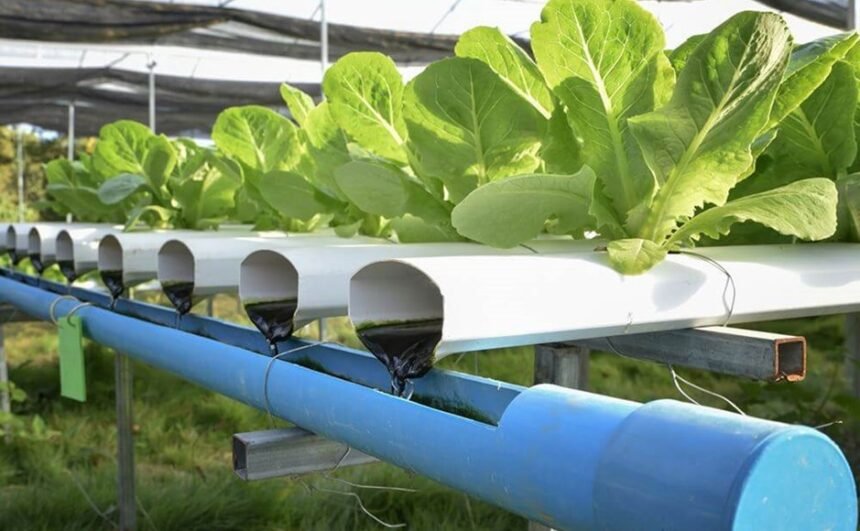How Fertilizer Used By Hydroponic System?
Working of hydroponics system
A hydroponics system is a method of growing plants in a nutrient-rich solution instead of soil. The solution is delivered to the roots of the plants through a variety of delivery methods, such as drip irrigation or a misting system. The plants are typically grown in a controlled environment, such as a greenhouse, and the temperature, humidity, light, and other factors are carefully regulated to optimize growth.
The main benefit of hydroponics is that it allows for year-round crop production, regardless of weather conditions, and can use significantly less water than traditional soil-based farming.
Read more: How Precision Agriculture Helping Farmers?
Fertilizer for hydroponic system
In hydroponics, plants are grown in a nutrient solution instead of soil. The solution provides the plants with all of the essential nutrients they need to grow, including macronutrients (such as nitrogen, phosphorus, and potassium) and micronutrients (such as iron, zinc, and copper). The specific nutrients required and the amounts will depend on the type of plant being grown.

There are two main types of fertilizer that can be used in a hydroponic system: water-soluble and slow-release.
Water-soluble fertilizers are dissolved in water and added to the nutrient solution. They are quickly taken up by the plants, and the solution must be frequently replaced to maintain the proper nutrient levels.
Slow-release fertilizers, on the other hand, are added to the growing medium (such as rockwool, clay pebbles, or perlite) and release nutrients over a longer period of time. They are less likely to burn the plants and require less frequent changes to the nutrient solution.
It’s important to note that not all fertilizers are suitable for hydroponic systems, make sure to use hydroponic-specific fertilizers.
Read more: Hydroponic Farming Complete Information Guide
How fertilizer flow in Hydroponic system?
In a hydroponic system, the nutrient solution is typically delivered to the plants through a variety of methods depending on the type of system being used. Some common methods include:
Flood and Drain: This method involves flooding the growing tray with the nutrient solution and then draining it away. This can be done manually, or with the use of a timer and a pump.
Drip Irrigation: This method involves delivering the nutrient solution directly to the roots of the plants through a network of tubes and emitters. The solution is delivered in a controlled manner, in a scheduled interval or continuously.
Read more: How Good Agriculture Practices Can Be Done?
Nutrient Film Technique (NFT): This method involves delivering a thin film of nutrient solution over the roots of the plants. The solution is pumped through a channel and flows over the roots in a continuous manner.

Aeroponics: This method involves misting the roots of the plants with the nutrient solution. The roots are suspended in the air and are misted with the solution using a nozzle or sprayer.
In each of these methods, the nutrient solution is delivered in the most direct and efficient way to the plants roots. It’s important to monitor the pH levels of the nutrient solution, as it affects the plant’s ability to absorb nutrients. A pH range of 5.5-6.5 is optimal for most hydroponic vegetables.
It’s also important to monitor the nutrient levels in the solution and adjust as necessary to ensure that the plants are getting the proper balance of nutrients for optimal growth and nutrition.
Read more: How To Start Organic Farming Business?
Nutrition in hydroponic vegetables
Hydroponically grown vegetables can have similar nutritional content to soil-grown vegetables, as long as the proper nutrients are provided in the nutrient solution. In hydroponics, the plants are grown in a nutrient-rich solution that is specifically formulated to provide the plants with all of the essential nutrients they need to grow, including macronutrients (such as nitrogen, phosphorus, and potassium) and micronutrients (such as iron, zinc, and copper).
Some common macronutrients used in hydroponic solutions are:
Nitrogen (N) for leaf and stem growth
Phosphorus (P) for root and flower development
Potassium (K) for overall plant health and disease resistance
Micronutrients are also important for plant growth, and are used in smaller amounts. Some examples are:
Read more: Organic French Bean Production Guide

Iron (Fe) for chlorophyll production
Zinc (Zn) for protein synthesis
Copper (Cu) for enzyme activation
It’s important to monitor the nutrient levels in the solution and adjust as necessary to ensure that the plants are getting the proper balance of nutrients for optimal growth and nutrition.
It’s worth noting that it’s important to monitor the pH levels of the nutrient solution, as it affects the plant’s ability to absorb nutrients. A pH range of 5.5-6.5 is optimal for most hydroponic vegetables.
Read more: Aeroponic Potato Farming Information Guide
Hydroponic vegetables can be healthy?
Hydroponically grown vegetables can be just as healthy as soil-grown vegetables, as long as the proper nutrients are provided in the nutrient solution. In a well-maintained hydroponic system, the plants receive optimal growing conditions and the exact balance of nutrients they need to thrive, which can result in vegetables that are high in vitamins and minerals.

However, the nutritional content of hydroponically grown vegetables can vary depending on the specific nutrient solution used and the growing conditions. It is important to monitor the nutrient levels in the solution and adjust as necessary to ensure that the plants are getting the proper balance of nutrients for optimal growth and nutrition.
Also, it’s worth noting that hydroponic farming can be more controlled and less exposed to environmental contaminants, pests, and pesticides, which may result in fresher and healthier produce. However, it’s important to ensure that the hydroponic system is well-maintained and properly sanitized to prevent contamination by pathogens.
Read more: Farming of Vegetables in Controlled Environment
It’s worth noting that the nutritional content of any vegetable is influenced by many factors including genetics, environment, and ripeness. The best way to ensure that you are getting the most nutritious produce is to eat a variety of fruits and vegetables, whether they are grown in soil or hydroponically.
Produced vegetables from hydrponic farming
Hydroponic farming can be used to grow a wide variety of vegetables, including:
Leafy greens such as lettuce, spinach, and kale
Herbs such as basil, mint, and cilantro
Tomatoes, peppers, cucumbers and other vine crops
Root vegetables such as carrots, radishes, and beets
Cruciferous vegetables such as broccoli, cauliflower, and cabbage
Read more: How China is Developing Agriculture?
Many of these vegetables are highly perishable and can be grown in a greenhouse or indoor setting, providing an opportunity to produce fresh produce year-round.
In addition to traditional vegetables, hydroponics can also be used to grow unusual or specialty crops, such as microgreens, edible flowers, or heirloom varieties.

Read more: Potato Planting care & Harvesting Guide
Hydroponic farming can also improve the taste, texture, and nutritional content of vegetables compared to soil-grown produce, as the plants are provided with optimal growing conditions and the exact balance of nutrients they need to thrive.
It’s worth noting that hydroponic farming can also use less water and land than traditional farming methods, making it an environmentally friendly option for producing fresh, healthy vegetables.




